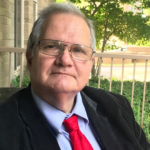
Among the things Pope Benedict XVI will be remembered for is his use of the word hermeneutic outside purely academic discourse. His “hermeneutic of continuity” as the way to understand Vatican II put that word into broader circulation.
And . . . who cares?
You should, as a Catholic.
First of all, what is a “hermeneutic”? Put simply, it’s a “key” or “principle” to interpret something. Many things are not self-explanatory. They need to be interpreted, and to do so, one must use the right key, the right “hermeneutic.”
As regards the Second Vatican Council, Pope Benedict contrasted a “hermeneutic of continuity” with a “hermeneutic of rupture.” What he meant is this: do you understand Vatican II in a relationship with all that preceded it in the Church, or do you see Vatican II as a break with what came before it?
That’s not a choice. It’s not a Chinese menu: choose A or B. The answer is directly tied with how you understand what the Church is.
As Catholics, we maintain that the Church was established by Jesus Christ. It is not a purely human institution designed to help us along in our “personal relationship with Jesus.” It is a divinely established institution that is essential to our having a relationship with Christ. It is how God clearly wants to lead human beings—not as isolated individuals, but as the family of God and member of Christ’s mystical body—to salvation.
Jesus clearly promised to be with his Church “until the end of the world” (Matt. 28:20), assuring that “the gates of hell will not prevail against it” (16:17-19), even if they may batter it. And, as Catholics, we say Pentecost is the “birthday of the Church” because, with the gift of the Holy Spirit, a band of ten erstwhile cowards and a Beloved Disciple turned into a force that burst forth on Jerusalem and the world.
So if Christ is with the Church, and his Spirit dwells in the Church until the end of the ages, the Church cannot teach one thing in one time and another thing in another time. There is one Truth: God. Everything—sacred and secular—is true insofar as it is in him.
That is why, in the Middle Ages, the Church rejected the idea of double truth—i.e., that something could be true in one area, like science, but false in another, like theology. That is why the Church has always stressed the harmony of faith and reason, and why the Church’s own teaching cannot be in contradiction to itself.
Vatican II has been called the “great outpouring of the Spirit” in our day. Indeed, it was. As St. John Paul II said, it was a “gift to the Church.” But December 4, 1963, the day the first documents of Vatican II were approved, was not the first visit of the Holy Spirit to his Church since he descended on Jerusalem.
The Second Vatican Council was a great gift. But it does not and cannot stand separate from, much less in contradiction to, what came before it. To claim otherwise is to suggest either that the Holy Spirit contradicts Himself or took a really long post-Pentecost vacation.
That is what Pope Benedict XVI meant by the “hermeneutic of continuity”: that to understand Vatican II, we must locate its teaching in the broader context of and harmony with the rest of the Church’s teaching.
Jeffrey Mirus rightly argues that the “hermeneutic of continuity” cuts both ways: the Council must fit into the Church’s tradition, but the Church’s tradition must also accommodate legitimate developments that come from the Council. But here, once again, you need a “hermeneutic of continuity” to distinguish legitimate from illegitimate developments.
This is not Benedict’s wild-eyed idea. It has a long history through the Church, arguably from the Church’s origins. When Paul insists on the centrality of Christ’s resurrection to Christian faith—something that happened long before his conversion—he invokes not just personal “revelation” or “experience,” but “the gospel . . . which you have received” (1 Cor 15:1,3). When he discusses the Eucharist—he wasn’t at the Last Supper—he conveys “what I also passed on to you” (11:23). He recognizes his need to “join the disciples” (Acts 9:26) even if they fear him. So, clearly, continuity marks even the first page of the New Testament.
In the Trinitarian and Christological controversies of the fourth century, the Fathers of the Church did two things: they developed doctrine by using the philosophical language of their day (e.g., “consubstantial”) to supplement Biblical vocabulary, and they also made sure that how one explains the reality of Christ was in continuity with the Faith that preceded it. That’s why, even though it was popular, Arius’s hybrid Jesus—not really God, not really human—was eventually called heretical: because it was not in continuity with what the Church had received. From Vincent of Lérins in the fifth century to John Henry Newman in the nineteenth, the acid test of legitimate doctrinal development was its continuity with what preceded it.
In speaking of the “hermeneutic of continuity,” Benedict was merely reminding the Church of its own tradition and practice, applying that tradition and practice to the modern need of how to understand Vatican II.
Before Benedict made “hermeneutic” a Catholic household word (we have lots of household words uncommon in non-Catholic households: try immaculate, consubstantial, and eschatological), the term had a life in secular academia.
Paul Ricoeur and Hans-George Gadamer were among the exponents of what was known as the “hermeneutic of suspicion.” It was a term coined in the 1960s, first in literature and then expanded. In literary analysis, the “hermeneutic of suspicion” refused to take a text at its face value. Instead, it contended that the obvious meaning of any text hid the “power” interests that its author wanted to protect, so that the “proper way” to read any text was not to see what was written, but to “interrogate” who benefited from and whose ox was gored by the formulation.
Obviously, texts can be misrepresentative, but to go through life convinced that most people are lying to you in order to protect their interests might suggest the need to get checked out for paranoia. Still, the “hermeneutic of suspicion” infected broad strands of academe. It is, arguably, the fuel behind the whole Critical Race Theory movement and its claims of “white privilege,” even if you didn’t know you had it. I’d argue it’s a version of modern gnosticism: nothing means what it says. Everything has a secret, hidden meaning, discernible only to an elite few, who reveal it to the unwashed masses.
Many of those attacking the “hermeneutic of continuity” do so with their own “hermeneutic of suspicion,” claiming that it was not fidelity to the Church’s teaching that led to its articulation, but the cabal of John Paul II and Benedict XVI trying to “stifle” Vatican II.
Consider the criteria by which the Church has always understood that her doctrine needs to develop in order to be faithful to who the Church is—as bride of Christ and founded by him—and ask honestly: shouldn’t you be suspicious of those who deny that?



